
kscarbel2
-
Posts
18,715 -
Joined
-
Days Won
114
Content Type
Profiles
Forums
Gallery
Events
Blogs
BMT Wiki
Collections
Store
Posts posted by kscarbel2
-
-
-
Toyota North America unveils hydrogen-fuel-cell heavy-duty truck proof-of-concept; twin Mirai fuel cell stacks
Green Car Congress / April 19, 2017
Toyota Motor North America, Inc. (TMNA) revealed “Project Portal”—a hydrogen fuel cell system designed for heavy-duty trucks applied in a Class 8 truck for use at the Port of Los Angeles (POLA).
Announced at a press conference with Port officials and representatives from California Air Resources Board (CARB) and the California Energy Commission (CEC), the zero-emission truck proof-of-concept will take part in a feasibility study examining the potential of fuel cell technology in heavy duty applications. The study will begin this summer and contribute to the Port’s Clean Air Action Plan, which has significantly reduced harmful emissions from operations at the Ports of Long Beach and Los Angeles since 2005.
As they did with the Prius and the Mirai, Toyota is taking a leap into the future of technology. By bringing this heavy-duty, zero-emission hydrogen fuel cell proof-of-concept truck to the Port, Toyota has planted a flag that we hope many others will follow. CARB will be following the progress of this feasibility study with interest, as we look to develop the best mix of regulations and incentives to rapidly expand the market for the cleanest, most efficient big trucks to meet the need for dramatic change in the freight sector.
—Mary D. Nichols, Chair, California Air Resources Board (CARB)
Project Portal is the next step in Toyota’s effort to broaden the application of zero-emission fuel cell technology that can serve a range of industries. It is a fully functioning heavy-duty truck with the power and torque capacity to conduct port drayage operations while emitting nothing but water vapor. Heavy-duty vehicles make up a significant percentage of the annual emissions output at the Port of Los Angeles, and the Portal feasibility study may provide another path to further reduce emissions.
The Project Portal platform is designed to provide the target performance required to support port drayage operations. The truck generates more than 670 hp and 1325 lb-ft (1796 N·m) of torque from two Mirai fuel cell stacks and a 12 kWh battery—a relatively small battery to support Class-8 load operations. As shown in the video below, the fuel-cell truck delivers excellent acceleration performance, compared to a conventional diesel.
The concept’s gross combined weight capacity is 80,000 lbs., and its estimated driving range is more than 200 miles per fill, under normal drayage operation.
Project Portal is just one part of Toyota’s ongoing commitment to fuel cell technology. It follows on the company’s continued work to expand California’s hydrogen refueling infrastructure, including the recently announced partnership with Shell to increase the number of hydrogen refueling stations in the state. (Earlier post.)
Hydrogen fuel cell vehicles play a role in California’s efforts to achieve greenhouse gas emission reduction goals, improve air quality, and reduce our reliance on fossil fuels. That’s why the California Energy Commission is investing in the refueling infrastructure needed to support adoption of these vehicles. The Commission applauds Toyota for putting this cutting edge technology to use a heavy-duty freight proof of concept. This demo will show how fuel cells can help support the heavy-duty sector’s efforts to increase efficiency, transition to zero-emission technologies, and increase competitiveness.
—Janea A. Scott, Commissioner, California Energy Commission
.
-
Toyota Rolls Out Hydrogen Semi Ahead Of Tesla's Electric Truck
Forbes / April 19, 2017
A battle for the future of clean trucks is breaking out. A week after Elon Musk said an electric Tesla semi is coming, Toyota sped ahead of him in its own exhaust-free truck: a hydrogen-powered 18-wheeler created to haul cargo at the Port of Los Angeles.
The carmaker’s truck, dubbed “Project Portal," fulfills a promise Toyota made in November to scale up the fuel cell system used in its Mirai sedan for a semi as part of a feasibility study. The Class 8 truck Toyota created using a Kenworth chassis, generates more than 670 horsepower from electricity generated by two Mirai fuel cell stacks -- enough to pull a total of 80,000 pounds. The truck also uses a bigger motor and battery than that in its midsize sedan, and should average 200 miles per fueling of compressed hydrogen gas.
“The power is large enough and the drivability and performance, everything, has to meet the current diesel truck requirement,” Toyota Senior Executive Engineer Takehito Yokoo told Forbes. “Because we are using a hydrogen fuel cell and motor, this is an EV, but not a battery-powered EV. The exhaust emission is zero, only water vapor coming out.”
Daily operation of the truck at the port, hauling cargo offloaded from ships to rail distribution centers, will run for an indeterminate period. For now, this is only a test of the technology and Toyota hasn’t committed to turning the truck power system into a commercial program, Yokoo said.
Running the study at one of the country’s busiest cargo terminals is intentional owing to persistent air pollution generated there by a heavy concentration of diesel trucks. California has pushed automakers for years to sell more types of low- and no-exhaust vehicles – including Prius hybrids, Mirai fuel cell cars and Tesla's battery-powered models – and wants similar options for heavy commercial vehicles.
“By bringing this heavy duty, zero-emission hydrogen fuel cell proof of concept truck to the Port, Toyota has planted a flag that we hope many others will follow,” Mary Nichols, chair of the California Air Resources Board, or CARB, said in a statement. “CARB will be following the progress of this feasibility study with interest as we look to develop the best mix of regulations and incentives to rapidly expand the market for the cleanest, most efficient big trucks to meet the need for dramatic change in the freight sector.”
Advocates of hydrogen see it as an abundant, clean alternative to petroleum that provides similar driving range and refueling time, versus hours for batteries. Tesla’s Musk is among its biggest critics, citing lower energy efficiency relative to batteries and storage challenges. He’s dubbed the technology “fool cells.”
Musk said Tesla would show its semi in September, but provided no details about the project, in terms of performance, price, range or when such a vehicle might go into production.
While batteries are storage devices for electricity, fuel cells make it in a chemical reaction between hydrogen and oxygen that produces only water as a byproduct. For years, fuel cells themselves, because they used precious metals and exotic high-tech plastics, were both very costly and less durable than conventional gasoline engines.
But two decades of dogged development efforts by Toyota, Honda, General Motors and Hyundai are showing progress.
Toyota’s Mirai sedan, about the size of a Camry, sells in California for about $57,000, and Honda’s competing Clarity model is available to consumers in the state for lease only, at $369 a month. Both go more than 300 miles per fueling. Hyundai also leases a fuel cell version of its Tucson SUV in California and this month said it would have a new hydrogen SUV arriving in 2018 with at least 500 miles of range.
General Motors has created a hydrogen fuel cell version of its Colorado pickup truck that’s being evaluated by the U.S. Army, and it has partnership to produce fuel cells with Honda at a Michigan factory.
Hino, Toyota’s commercial vehicle unit, has hydrogen buses operating in Japan, while another subsidiary makes fuel cell forklifts.
Over the past year, Toyota engineers spent a great deal of time with trucking companies at the Southern California port to learn the daily requirements of the vehicles they use, according to Craig Scott, national manager for Toyota’s U.S. advanced technology group.
“They had done a lot of pilot programs with CNG and electric vehicles and they all had the same complaints: ‘It’s not really feasible. We can’t replace our diesel trucks with these because we can’t refuel quickly or the performance of the truck isn’t good enough,’” Scott told Forbes. “We thought great, the fuel cell handles both of those.”
-
Toyota to test hydrogen cargo truck at Port of Los Angeles
Automotive News / April 19, 2017
Toyota plans to test a heavy truck powered by a hydrogen fuel-cell system at the Port of Los Angeles as part of a feasibility study beginning this summer.
Toyota made the announcement of “Project Portal” in Los Angeles with representatives of the port, the California Air Resources Board, and the California Energy Commission.
“The zero-emission truck proof of concept will take part in a feasibility study examining the potential of fuel cell technology in heavy-duty applications,” the company said in a statement on Wednesday.
A Toyota spokeswoman noted that the test subject is a Kenworth truck "with Toyota fuel cell guts."
Project Portal is a fully functioning heavy-duty truck with the power and torque to conduct port duties while emitting nothing but water vapor, much like the Mirai fuel-cell sedan that Toyota sells and leases in a swath of southern California where re-charging stations are available.
“CARB will be following the progress of this feasibility study with interest, as we look to develop the best mix of regulations and incentives to rapidly expand the market for the cleanest, most efficient big trucks to meet the need for dramatic change in the freight sector,” said Mary Nichols, chair of the air resources board.
Bob Carter, executive vice president of Toyota Motor North America, said the project is an extension of the brand’s production of one of the first mass-market fuel-cell vehicles, the introduction of fuel cells in buses in Japan, and the exploration of the benefits of a zero-emission heavy-truck platform.
.
-
What we want to say to the world is, please come lawfully.
Wait your turn, make your application and it will be evaluated.
And if you're accepted, come. But don't come illegally.
Jeff Sessions
.
-
5 hours ago, logtruckman said:
Does Pete offer steel crossmembers? We had a salesman spec out a 567 heavy duty chassis and the sheet says it has aluminum crossmembers with the heavy duty double frames. seems odd.
Yes
-
ZF to display new transmission at Brisbane Truck Show 2017
Prime Mover Magazine / April 16, 2017
Transport component specialist, ZF Australia, will officially launch its new TraXon commercial vehicle transmission at this year’s Brisbane Truck Show in May.
Celebrating its 30th anniversary in Australia in 2017, the German brand’s newest transmission – TraXon – will be specifically aimed at modern trucks.
ZF described the Traxon’s modular, automatic transmission design as a “world first” and enables the basic transmission to be combined with various setting-off and shift modules, making it more economical in practice, while giving manufacturers and operators the best possible flexibility for every application as well as increasing driver comfort.
“Its compact, robust design and the highest transmission efficiency in its category make TraXon the new standard in terms of cost-effectiveness,” ZF said in a statement.
“Thanks to this robustness, the new TraXon transmission system not only keeps operating costs down, it also keeps service costs over its entire lifetime particularly low.
“Furthermore, it features ZF’s innovative electronics, including software, combining the predictive shifting strategy, PreVision GPS, as well as a rolling and rock-the-vehicle-free function.”.
-
 1
1
-
-
Mack Trucks Australia / April 17, 2017
In long-distance haulage of refrigerated goods, two things are paramount: reliability and fuel economy. For S&G Transport, a switch to 685hp Super-Liners has meant a big improvement in fuel economy, up to 1.9 km/litre from 1.3 Km/litre with another brand.
.
-
Return of the prodigal son
Kirstin Payne, Big Rigs / April 19, 2017
"Back home again" was the catch cry of the recent ProStar International launch, an almost conclusion to the corporate narrative and return of the local label
Its been a two-year-long journey since the venture was officially announced at the Brisbane truck show in 2015, with dealers and retail details still set to be fine-tuned in the coming months.
Launched at the Iveco plant in Dandenong, the unveiling of the brand's return was a grass-roots reintroduction by International, playing on the history of the badge.
The International Harvester after all, was produced in Australia just under half a century ago.
The nostalgic theme, "together on the road", International painted pictures of both rusty sunsets, rugged tracks, playing on the machines reliability and making a pointed attempt not to show any north American footage of the vehicle.
The production opted instead for B- roll of the ProStar's South American counterpart, to showcase the tougher side of the long awaited Navistar child.
Navistar vice-president for Global export Federico Palomo, who spoke on the company's history, said the first Australian International was made at the Dandenong site.
"Iveco and International have had a very, very deep and long history together here in this market place," Mr Palomo said.
"ProStar is a star and we are back where we belong.
"I am very optimistic, seeing a bright future for the global economy and therefore truck sales," he said.
Iveco Australia Managing Director, Michael Jonson said dealers were pleased to add the International conventional 15 litre to their product range.
"We had a very good year in 2016, we even see with this new product and this new brand it will get even better for us in the market in 2017," he said.
Yet the reported initial orders of 100 units tell a story of prudence rather than unbridled confidence, particularly when a number of the truck orders are expected to go directly to International's sister company, Case IH.
"A month ago we had the Case IH dealer convention and I mentioned to them we are bringing the International trucks back into the market and that I thought it would be just wonderful if all the Case IH dealers had international trucks to deliver their international harvesters," Iveco Australia's parent company, CNH Industrial executive managing director for Australia and New Zealand Ray Osgood said.
"They triggered off on this idea as well, and hopefully we will be moving a few through our own sister network, so I am delighted about that."
Mr Osgood was equally as confident of the product and pleased with the final outcome.
"Welcome back to the future, I think they are going to sell like hotcakes," Mr Osgood said.
"It's bit like a family member that has gone out on their own and now come back again," he said.
So what do we now know about the the prodigal son of the Iveco family?
Pulling back the black satin marketing executives introduced four distinct models for the International brand.
Frills free, simple and refined with engineering that tackled the feat of fitting the 15L Cummins engine into a right hand drive model.
"This gets back to International heritage, its a practical truck and a tool for business," International engineering manager, Adrian Wright said.
"All the elements have been fine tuned to a point where it feels natural, so you don't have to work it, it just sits on the road and does what you ask it to do," he said.
The ProStar is equipped with a Cummins x15 rated at 550 horsepower with 2500Nm of torque.
The Cummins engine comes with an ADEPT system harnessing the electronic capabilities of the engine and transmission to make powertrain control decisions in real time.
All models come with Eaton 18 speed transmission with a choice of manual or the UltraShift automated version.
Steering is a Shepparton 100 box, and Hendrickson Primaxx rear suspension with dual circuit air brakes, drum brakes, ABS and automatic traction control.
One of the Australian specific designs includes a range of bull bars, however at this stage there is no stainless steel option for the grill.
The range offers a choice of two day cabs, one as a prime mover (wheel base 4.3 metres)and a tipper and dog option with a longer wheel base (5.4 metres).
The short BBC (bumper to back of cab) of the day cabs is posed as a selling point.
A hybrid cab for the new ProStar looks to capitalise on providing a narrow bunk for short and regional haul operation where BBC can be reserved while offering an approved sleeper.
The IVECO marketing team sees this narrow bunk version as supplying an under-supplied, niche market.
This new cab is 660mm longer than the standard day cab, the bunk is ADR compliant.
The Navistar executives were shy about answering the question "will the Lonestar be available in Australia"?
"Watch this space," Frederico Polomo said, "there is more to come."
-
P-61s are extremely rare. I only know of three, at the Smithsonian, the Mid-Atlantic Air Museum in Reading (PA), and the Beijing Aviation University museum.
.
-
Thanks Frenchy. I recall that France bought 1,000 Ford Rangers.
https://www.bigmacktrucks.com/topic/39932-french-army-orders-1000-ford-ranger-pickup-trucks/
-
Renault Trucks Press Release / April 18, 2017
Robustness Renault Trucks vehicles with MKR team in impressive context during Dakar 2017: proof through experience.
. -
Volvo Trucks Press Release / April 18, 2017
Truck enthusiast Ralf Ekdahl shows us his fully restored Volvo G89 tow truck. Absolutely everything on this old beauty is restored back to its original condition.
It isn’t just the looks that impress, the engine is completely rebuild and purrs like a kitten..
-
-
11 minutes ago, bulldogboy said:
Don't see too many Flex's here in New England. It looks like a modern version of my family's 1959 Ford Country Sedan station wagon. Is the new vehicle coming out of Wayne going to be a Bronco?
If so, what's the difference between a Bronco and an Everest?
bulldogboy
The Bronco fans dream of a modern interpretation of the original 2-door Bronco with like dimensions and design cues. I agree. Note the rendering created by a Bronco fan.
But the Everest doesn't look anything like that.
https://www.bigmacktrucks.com/topic/37730-ford-introduces-all-new-mid-size-everest-suv/?hl=everest
The Everest is as rugged as the original Bronco, but the design theme is totally different.
.
-
 1
1
-
-
Bob, you made me hungry. You mentioned the Ford Flex and I immediately thought of California, the one state where it's a strong seller. And with that, I thought of Galpin Ford's Horseless Carriage Restaurant in Van Nuys.
-
Car & Driver / November 14, 2017
Can a hamburger sell a new car? “At Galpin, it could,” says Jeff Skobin, marketing manager at the sprawling Galpin Motors complex, which includes a diner, at the corner of Roscoe and Sepulveda Boulevard in Van Nuys, California.
What about a fruit smoothie? “No,” says A.J. D’Amato III, sales manager for pre-owned vehicles at Newport Lexus in Newport Beach, California. “But, the people making that smoothie might [sell a car].” More than ever, dealerships are going to great lengths to provide a little something extra that will keep the customer happy and, perhaps more importantly, hanging around in the store. The thinking is the longer you stay, the more likely you are to buy. The extras have the added effect of creating a positive experience. An espresso, a meal, or even a haircut can keep a dealership at the top of prospects’ minds.
Beyond having an on-site café selling healthy fare and potent espresso, Newport Lexus is pet-friendly and even offers complimentary airport parking for Lexus owners traveling from nearby John Wayne Airport. During business hours, they’ll drop you off, pick you up, and wash your car, all free of charge. “We always ask ourselves, ‘What more can we give?’ ” says D’Amato. “The valets. The car-wash guys. It’s really their personal touch that makes the difference. And they’re not trying to hard-sell anybody on anything.”
Galpin Ford, for its part, has an on-site car museum, and its Horseless Carriage diner has served customers for almost 50 years. Its first ever in-dealership Starbucks has been at it for 12. Skobin explains, “In [vehicle and] customer-service surveys, the restaurant comes up a lot.” It’s difficult to quantify, but making the dealership a place that’s about more than just selling cars might just sell more cars. In fact, Galpin has been Ford’s top volume dealer for the past 24 years.
As the old saying sort of goes: Once you have them by their stomachs, their hearts and minds will follow.
Reviewing the Restaurant at Galpin Ford
More than a greasy spoon for grease monkeys, the Horseless Carriage restaurant sits adjacent to the largest Ford dealership in America. Frank Galpin opened Galpin Ford in 1946 in California’s San Fernando Valley north of Los Angeles; the next owner, Bert Boeckmann, added the Horseless Carriage in 1966 as America’s first dealership-based restaurant. It’s a concept the rest of the dealer world has copied and embraced—create a positive experience and car-buying won’t seem as nightmarish.
At the Horseless Carriage, time seems locked in first gear. Parts of the menu—like house-made tapioca, Jell-O with whipped cream, malted milkshakes, and battered and fried zucchini (accompanied by homemade dressing)—pair nicely with the Mad Men ambience. Turquoise leather banquettes, a Formica-topped lunch counter, and floral glass chandeliers hearken back to the diners of the space-race era. After draining a malted, it’s surprising to exit through a showroom of Fusions, Fiestas, and Flexes instead of Thunderbirds, Fairlanes, and Falcons.
However, chef Geovanni Euceda (formerly of the Beverly Hills Hotel) makes a chili-garlic tiger shrimp linguini that might have you forgetting you’re surrounded by 50 acres of sheetmetal, lost in a time before anti-lock brakes. With a menu focused on freshness (house-trimmed and -cut steaks, for example), the restaurant’s highlights include the Mustang Burger, which is a half-pound beef patty drenched in chili, onions, and cheddar cheese served open-faced in a ceramic boat. The coconut cream pie is made fresh each morning, and the lobster-and-eggs breakfast is a steal at $12.
The popularity of the Carriage extends beyond nervous, prospective car buyers. Locals come in from the palm-lined streets of the surrounding San Fernando Valley for daily lunch specials, and regulars line the counter every morning. They take their usual seats, submit their usual orders, and await service from their usual waitstaff. Guess where they’re coming to buy their next car.
Website - http://www.galpinford.com/galpin-horseless-carriage-restaurant
.
-
Bob, the Flex is an odd bird. It sells like hotcakes in California, but lackluster everywhere else.
-
Peterbilt, at least for now, still offers customers a traditional cab. They give you a choice. The Model 367 makes for a great vocational chassis or low-boy tractor.
http://www.peterbilt.com/products/vocational/367/
.
-
Aaron Marsh, Fleet Owner / April 6, 2017
Electric power in trucks and trucking: it’s such a neo-modern, 2000s and 2010s kind of concept. Isn’t it? Or maybe, actually, it’s something much older, stretching back to the turn of the 20th century and the very earliest days of commercial and passenger automobiles. What might surprise some advocates and others interested in electric trucks is how closely what was said about them more than a century ago mirrors what’s being said still today.
The earliest internal combustion engines had to be cranked, weren’t particularly reliable, weren’t particularly powerful, and could often be noisy and dirty. Meanwhile, in the early 1900s, homes were still being electrically wired; electricity brought and was full of new possibility. Large battery technology—as in batteries used in applications like vehicles—was expensive, but respectably capable.
An October 1915 article in the New York Times noted that “the largest transportation delivery fleets in the world are chiefly composed of electric vehicles.” Businesses like department stores, bakeries, breweries and laundry service providers all, in various percentages, had been purchasing and using electric trucks going back to the turn of the century as the first automobiles trickled into society.
The article, “Electric Proves Value in Laundry Service,” profiled Henry Sieminski of Jersey City, NJ, and his laundry business. The company had replaced a number of horses and wagons used in city laundry service pickups and deliveries with eighteen 1,000-lb. electric delivery trucks, running them successfully for three years. “The 18 electrics have not only done the work of the 40 horses which I formerly owned, but also take care of an unusually heavy increase in business,” Sieminski stated.
The laundry burned coal in generating its own electricity, which it used to heat large amounts of water used for industrial-load washing. Sieminski said he considered it a “by-product” to charge the electric trucks at night as well, since the company had to use much more electricity in heating water anyway. He also considered it a by-product that the company got distilled water it used in the trucks’ batteries from steam that collected above the company’s hot laundry tanks.
Sieminski pointed out a number of advantages of the electric trucks for his business, including very low cost. He figured that the electricity needed to charge the trucks cost $71/month, or $4 per vehicle per month (and with the distance each truck covered, it worked out to about six-tenths of a cent per mile to charge and run the vehicles). Maintenance of the electric trucks was “negligible,” Sieminski said, and didn’t amount to much, and what parts were on the trucks were standard and easy enough to get and replace, even if a manufacturer went out of business.
While tires on the laundry business’s gasoline trucks would last 3-4 months, tires on the electric trucks lasted much longer at 1.5-2 years, and the electric vehicles themselves would last perhaps 15 years or more, since they had little need for maintenance and few parts generally. Electrics got a “legendary” reputation for working almost indefinitely, and there seemed also to be a matter of them getting better traction in inclement weather.
“During the most severe snowstorms last winter, our electrics made their usual number of trips in the same average time. Several times our gas cars were stalled and had to be towed in,” said Sieminski. That was backed up seven years later in the Edison Monthly published by the New York Edison Co.: “Ice on the asphalt has no terrors for electric trucks. Their traction is sure and their control is positive, and they can pick their way in and out of traffic without the least inconvenience.”
Relics of the past or ahead of their time?
The other benefit, in very a noticeable way, was image. Sieminski stated in the Times that he felt that having the electric trucks hauling through the streets of Jersey City boosted his company’s appearance out among the public. “A clean, attractively painted, smooth-running, silent electric is the best advertiser in the world for the laundry business,” he contended. “I am fully convinced that for laundry delivery service, the electric is the most efficient and economic vehicle.”
In May 1922, the Edison Monthly reported that “the future of the electric vehicle is assured because good transportation is based on economy and reliability—and the electric has both.” Speakers at an electric vehicle convention the prior month in New York had “showed beyond question that in their proper fields, electrics far outclass any other type of delivery equipment.”
Into the 1920s, 1930s and beyond, businesses making various kinds of deliveries—including United Parcel Service— ran electric trucks, well after electric vehicles had been eclipsed by gasoline- and diesel-powered ones, particularly in the commercial vehicle arena. But at long last, electric trucks faded into memory and were relegated to more and more obscure use, and the decades marched on.
Hurricane of the present
And suddenly, we’ve arrived at the present alternative fuels use in trucking in 2017, and electric trucks seem to have wrestled a spotlight all to themselves. For the past several years as gas and diesel prices have been very low in the United States, natural gas used in trucking—most often compressed natural gas, but also liquid natural gas—has been sidelined somewhat. At the same time, though, last year and this year have somehow continued to bring quite a flurry of news about electric trucks.
Part of the evidence of a surge in electric vehicles is the growing noise coming from the competition. Reuters reported on Feb. 21, for example, of a U.S. biofuels lobbying group joining forces with an oil industry group, though they’d been longtime rivals, “noting electric vehicles as one area where both sides have concerns.” That concern in particular was about government subsidies for electric vehicles and other vehicle types losing ground.
What’s notable with electric power in trucking is how widespread the news has been. There’s been activity from heavy Class 8 electric yard trucks and waste trucks to medium-duty delivery vehicles—a particularly promising use—with some light- and medium-duty electrics used for last-mile delivery operations. But there’ve also been light- and heavy-duty electric trucks released by Daimler and a dramatic-looking heavy-duty electric truck from Nikola among new electric trucks bursting onto the scene.
A study by the Consumer Federation of America (CFA) in September last year found that consumer interest and acceptance of electric vehicles is growing. When asked if that increasing consumer familiarity with EVs might help drive EVs in trucking, a CFA representative told Fleet Owner it’s more likely to be the other way around: that EVs in trucking will help drive consumer use and adoption of EVs in the passenger car world. And meanwhile, a January report from Navigant Research estimates global sales of electric medium- and heavy-duty trucks will reach a significant 332,000 in 2026.
Workhorse
In the medium-duty segment, Workhorse Group Inc. has built up some steam over the last year or so with improvements, sales and new technology demonstrations with its hybrid electric trucks. The company’s E-GEN delivery truck got a smaller, more fuel-efficient BMW gasoline engine that comes on to charge the batteries and extend the truck’s range when charge is drained.
UPS is testing delivery innovations with Workhorse electric trucks and drones.
Further, however, Workhorse also builds drones. UPS, which announced purchases of 325 of Workhorse’s delivery trucks, also in February this year showcased its testing of a Workhorse truck and HorseFly octocopter drone. The drone can supplement a driver and/or other workers delivering packages up to 10 lbs. on delivery flights up to half an hour long.
“It has implications for future deliveries, especially in rural locations where our package cars often have to travel miles to make a single delivery,” said Mark Wallace, senior vice president of global engineering and sustainability at UPS. “Imagine a triangular delivery route where the stops are miles apart by road; sending a drone from a package car to make just one of those deliveries can reduce costly miles driven.”
Workhorse has been blazing some new trails in medium-duty vehicles in terms of fuel efficiency. The company drew from telematics data that its trucks generate to calculate that the E-GEN is achieving the equivalent of 30-plus mpg during stop-and-go parcel, bakery and uniform delivery routes. The vehicles, Workhorse claims, can offer a saving of as much as $165,000 in total cost of ownership vs. gasoline or diesel trucks.
A final but significant note for Workhorse is the company’s forthcoming W-15 electric pickup, which right now can be seen only via a few dramatic-looking sketches. Workhorse says it will feature plenty of advanced safety technology and was designed to be “the safest pickup ever built,” offering 4WD, 2,200-lb. payload, 5,000-lb. towing capability, 80-mi. battery-only range, and unlimited extended range via its BMW gas-powered generator motor.
With an order for 500 of the W-15 electric pickups just in from Clean Fuels Ohio, Workhorse says it also has commitments from Duke Energy, Portland General Electric, the City of Orlando (FL), and Southern California Public Power Authority for the trucks.
Nikola
Possibly the biggest splash to have hit the news lately regarding electric trucks was made by the Nikola One hydrogen-electric Class 8 tractor officially unveiled in December. This thing uses high-density lithium batteries and generates additional energy via hydrogen fuel cell; Nikola Motor Co. says the truck will have a range between 800 and 1,200 mi.
Very notably also, the Nikola One’s electric drive system is expected to deliver a massive 1,000 hp. and 2,000 lbs.-ft. of torque. Because all that power and torque is available from the electric drive system immediately, the truck is estimated to take off and blow through a 0-60 mph run in 30 sec., which means it’s twice as fast off the line as a conventional diesel heavy truck, Nikola estimates.
One of the first customers to step up and say it’s ordering the Nikola One was U.S. Xpress Enterprises Inc., which said it plans to add an unspecified number of the tractors to its fleet when they go into production in 2020. “U.S. Xpress drivers are going to have one of the most environmentally sound trucks on the road that they are going to love to drive,” said Nikola Motor CEO Trevor Milton.
“America is looking for a change,” Milton wrote in a column for Fleet Owner. “Zero tailpipe emissions from commercial trucks is incredibly important. America is tired of loud, dirty and smelly diesel trucks polluting our environment.” He contends Nikola has orders for more than 8,000 of the hydrogen-electric tractors and plans to construct over 360 hydrogen stations nationwide.
“As diesel fleets are retired, America’s operators will be able to turn to hydrogen and electricity to power their trucks,” Milton predicts, if overly optimistically. “Diesel engines will always have a place in America, but they will suffer a slow, painful death similar to what Kodak experienced with its film business with the debut of digital cameras.”
Daimler / Mercedes-Benz
At IAA 2016 in Hannover, Germany, the world’s largest commercial vehicle show, Daimler’s truck group showed off the Mercedes-Benz Urban eTruck, a fully electric cabover with refrigerated body and 26-ton GVW. The futuristically sleek, somewhat narrow-profiled truck appears designed to navigate through the tightest European roadways.
“We are currently talking to around 20 potential customers from the disposal, foodstuffs and logistics sector,” noted Stefan Buchner, head of Mercedes-Benz Trucks worldwide, of the Urban eTruck’s future sales potential. As he continued, the pitch carried elements electric truck proponents claimed over a century ago: “Zero emissions, quiet as a whisper and with a payload of 12.9 ton, the Urban eTruck offers an impressive, economical and environmentally friendly concept.”
Dipping its toe ever so slightly into the water, Daimler says it will deliver the first handfuls of Urban eTrucks this year. “The vehicle will initially go in a low two-figure number of units to customers in Germany, and later in Europe, too,” Buchner stated. “It will be used in real transportation applications there.”
Daimler also offered up the Mercedes-Benz Vision van, an electrically powered, zero-emission, almost liquid-sculpted work van. It’s a last-mile-type delivery van and can carry one or more drones capable of helping deliver packages, just as others are looking to test and implement.
In the light-to-medium sweet spot, the Class 4 Mitsubishi Fuso eCanter all-electric truck is coming to the U.S. market this year. Rather counter to what we’re seeing in EVs from Daimler, Wolfgang Bernhard, formerly the head of Daimler Trucks, noted recently that a decade ago, he saw “no market” for electric trucks.
However, battery technology advanced about 2.5-fold and costs went down by roughly that same factor since then. And that brings us to this year, when the Fuso eCanter will simultaneously arrive in “small-scale production” numbers in the United States, Japan and Germany and is likely to find itself in a range of urban delivery scenarios.
Orange EV big yard trucks
Late last summer, Orange EV announced it’s accepting orders for its Class 8 T-Series electric terminal truck, a.k.a. yard mule, hostler or spotter truck. The trucks, which can carry a price tag in the mid-to-high $200,000s each, also are eligible for big discounts courtesy of California’s Hybrid and Zero-Emission Truck and Bus Voucher Incentive Project.
Incentive funds can reduce the cost per T-Series truck by up to $140,000, resulting in a net cost as low as $105,000 per truck. That enables fleets “to purchase electric trucks with the same funds earmarked for diesels, and then operate for significantly less, saving up to 90% net in fuel and more in a broad range of other areas,” according to Mike Saxton, chief commercial officer at Orange EV.
Saxton spoke with Fleet Owner about why fleets consider switching to the electric yard mules. He said it was about “getting the job done while eliminating diesel fuel and emissions.” Using incentives such as those noted above, fleets can minimize equipment costs of electric trucks and then save considerably in the long run. Saxton explained that compared with fuel costs for diesel yard trucks and accounting for the costs to recharge the Orange EV trucks, purchasers can expect to save a net of 80-90%.
Also, much of the mechanical systems on diesel trucks—things like engine, transmission and emission/exhaust systems—are replaced by batteries and a maintenance-free, brushless induction motor. That reduces maintenance costs for electric trucks to a relative minimum compared with diesel truck maintenance, Saxton said. In the longer term, fleets that invest in electric trucks like the T-Series yard mules can expect typical electric vehicle durability and very low operating costs.
Electric refuse trucks
The municipal waste truck sector is another that’s had some attention paid to it by electrification. It makes sense: if, for point of argument, range remains a big challenge for electric trucks and must be overcome in the case of products like the Nikola One over-the-road semi-truck, shorter local delivery routes have been a natural fit for electric trucks back since Sieminski’s Jersey City laundry business and others ran them in the early 1900s.
And along with a pickup-and-delivery-type business like a uniform service, for instance, there’s also that omnipresent municipal pickup service: waste and recyclables collection. Clipping door-to-door often in the early hours of the morning, could a clean, whisper-quiet, electric waste truck going about its business offer city residents any appeal?
Mack Trucks thinks so, and showed off one of its Class 8 LR model refuse trucks outfitted with an electric driveline last summer. The electric driveline was supplied by Wrightspeed, whose Route 1000 powertrain uses electricity for 100% of vehicle propulsion and adds a multi-fuel-capable turbine regenerator engine that can recharge the batteries and provide “unlimited” range. Wrightspeed says the heavy-duty electric drivetrain is suited for refuse, delivery and mass transit applications.
Finally, BYD and Wayne Engineering last fall announced an all-electric refuse truck that skirts that longtime EV issue of range: it’s said to cover 100 mi. per charge, and with quick-charge capability at that. It’s designed to offer wraparound visibility to assist in negotiating tight urban roads and alleyways. And Stella Li, president of BYD America, hearkened to those age-old benefits of electrics—that they’re much cleaner and environmentally friendly—in highlighting benefits of the new electric refuse truck.
“This new 3.9-ton truck, which gets 100 mi. of charge in just 2.5 hours, is the chance to finally make cleaning our neighborhoods a clean prospect in and of itself,” Li said.
.
-
-
Truck News / April 18, 2017
Peterbilt is saluting Canada’s 150th anniversary through its special edition Model 389 with exclusive Canadian features.
“Canadian owner-operators and premium carriers can honor Canada with the addition of Peterbilt’s Model 389 Canadian 150th Anniversary Edition,” says Kyle Quinn, Peterbilt General Manager and PACCAR Senior Vice President. “It delivers proven productivity, dependability and uptime combined with unique styling and understated elegance.”
The Model 389 Canadian 150th Anniversary Edition is configured with a 131-inch BBC and can be spec’d in 72- and 78-inch sleeper configurations. Exterior features of the Model 389 Canadian 150th Anniversary Edition include: Exhaust Stacks etched with “Canada 150”; bumper with 150th Anniversary emblem; Polished battery box, fuel tanks and quarter fenders; Numbered Canadian 150th Anniversary Emblem on each side of the sleeper; and Special formulated Legendary Canadian red paint color.
Inside the cab, Model 389 Canadian 150th Anniversary Edition has exclusive features and branding that includes: Platinum-level Arctic Gray interior with a dark top dash with blackwood finish accents on the dash, doors, manual transmission shifter knob and sleeper cabinet trim; Peterbilt Premium Leather Seats Featuring a Maple Leaf on the Headrest; and Stylized steering wheel.
“The Model 389 Canadian 150th Anniversary Edition holds its own among Peterbilt’s most iconic trucks,” Quinn says. “Through unparalleled performance and unique design, it commands attention and furthers our tradition of providing trucks with industry-leading quality.”
The Model 389 Canadian 150th Anniversary Edition is available now for order through Peterbilt dealerships with production scheduled for May 15, 2017.
.
-
 2
2
-
-
-
Trump order to target foreign worker visa program
BBC / April 18, 2017
President Donald Trump has signed an executive order to review a temporary visa program used to place foreign workers in high-skilled US jobs.
The order directs agencies to enforce government rules on excluding foreign contractors from bids for government projects.
He signed the so-called Buy America, Hire America order on a visit to a tool factory in the US state of Wisconsin.
The order is aimed at fulfilling his "America First" campaign promises.
But it falls way short of Mr Trump's campaign pledge to end the H-1B visa program.
“I will end forever the use of the H-1B as a cheap labor program, and institute an absolute requirement to hire American workers first for every visa and immigration program,” Trump says on his website. “No exceptions.”
(https://www.donaldjtrump.com/press-releases/donald-j.-trump-position-on-visas)
Mr Trump will direct the departments of State, Justice, Homeland Security and Labour to propose reforms to the scheme, which allows American employers to bring foreign workers to fill US jobs.
"With this action we are sending a powerful signal to the world that were going to defend our workers, protect our jobs and finally put America first," he said at the Snap-On Inc headquarters in Kenosha, Wisconsin.
Mr Trump's wife Melania used an H-1B visa in her early days as a model in New York, says the BBC's Gary O'Donoghue in Washington.
The administration's goal is to ensure such visas are given to the most qualified or highest-paid applicant, according to two senior officials.
The four departments will then submit their findings to Commerce Secretary Wilbur Ross and release a report in 220 days.
Last year, Disney was accused of taking advantage of the H-1B visa scheme to lay off American technology workers, who were forced to train their foreign replacements.
The government allows 85,000 immigrants each year through the H-1B visa program, which is reserved for foreign nationals in "specialty occupations" and is largely used by the technology industry.
The government uses a lottery system to grant 65,000 visas every year and randomly distributes an additional 20,000 to graduate students.
In recent years, the US has been overwhelmed by applications for the program.
But the number of applicants fell to 199,000 this year, down from 236,000 in 2016, according to US Citizenship and Immigration Services.
A senior Trump administration official argued on Monday that the H-1B visas are supposed to be awarded to highly qualified workers, but often bring in less skilled employees who earn lower wages than those they are meant to replace.
Under the new order, the H-1B visa would no longer serve as a cheap way for companies to replace US workers, the official added.
Tech companies contend the program is used to recruit top talent, but some of the H-1B visas are also used for outsourcing firms. Critics say these undercut unemployed Americans and fill lower-level information technology jobs.
Indian nationals are the largest group of recipients of the H-1B visas issued each year.
More than 15% of Facebook's US employees last year used a temporary work visa, according to a Reuters analysis of US Labor Department filings.
The executive order will also focus on reviewing waivers in free-trade agreements and whether they allow foreign firms to undermine American companies in the global government procurement market.
"If it turns out America is a net loser because of those free-trade agreement waivers, which apply to almost 60 countries, these waivers may be promptly renegotiated or revoked," a second official said.


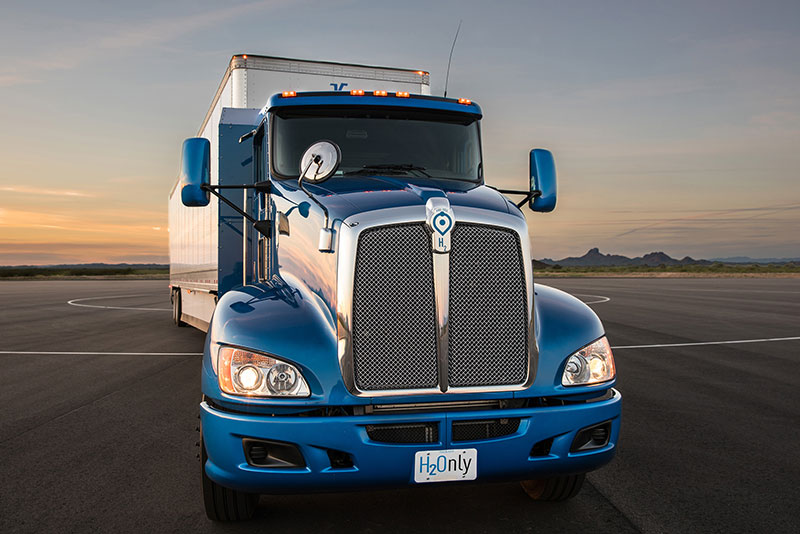
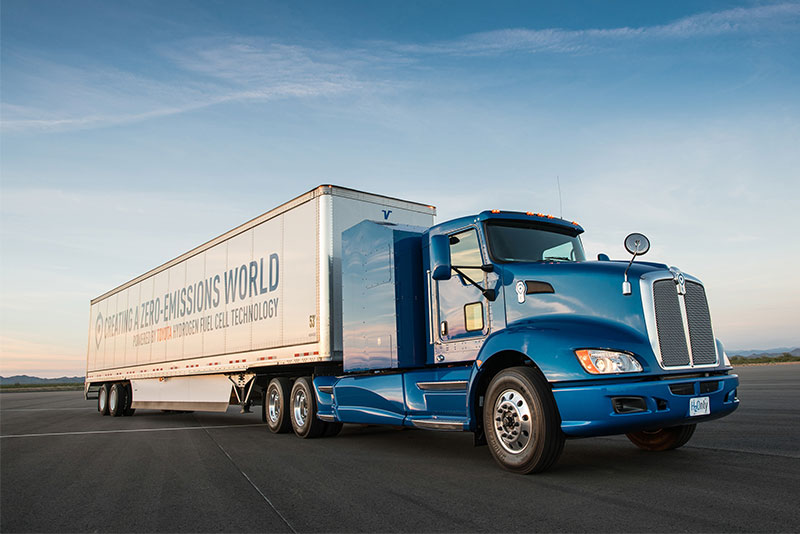
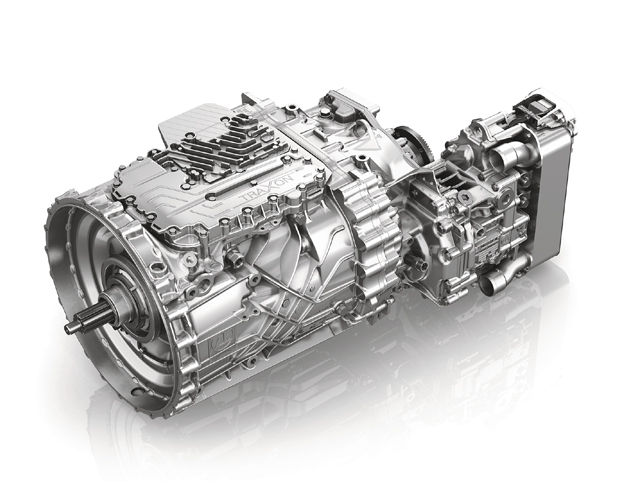
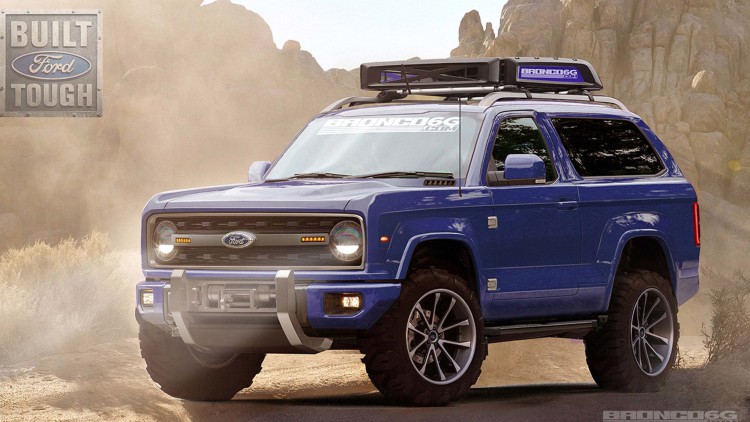
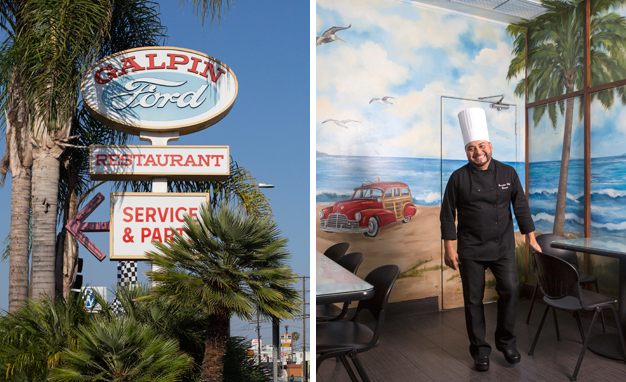
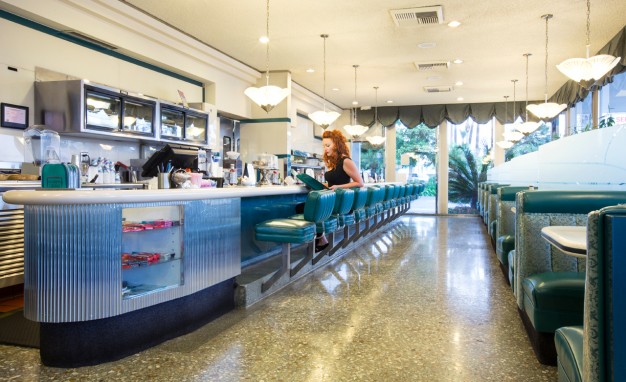

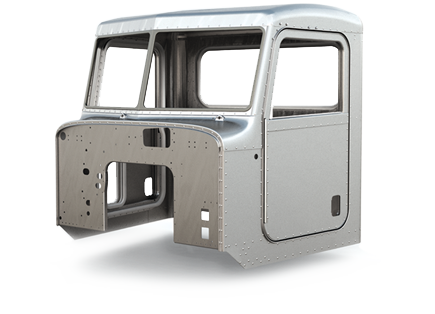
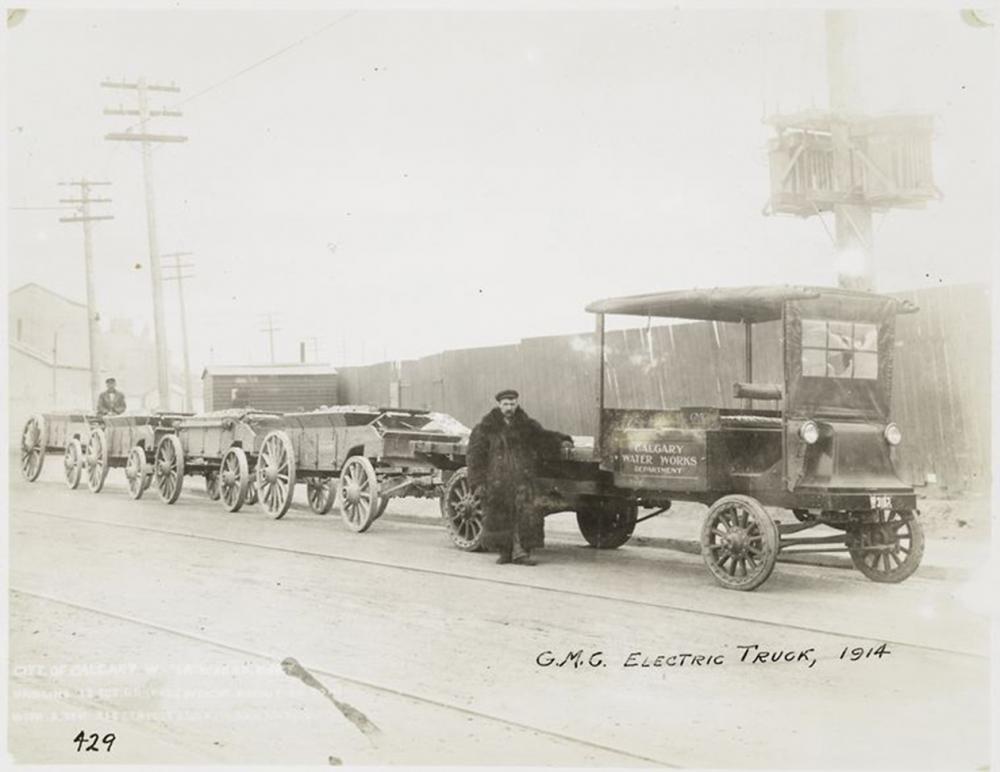

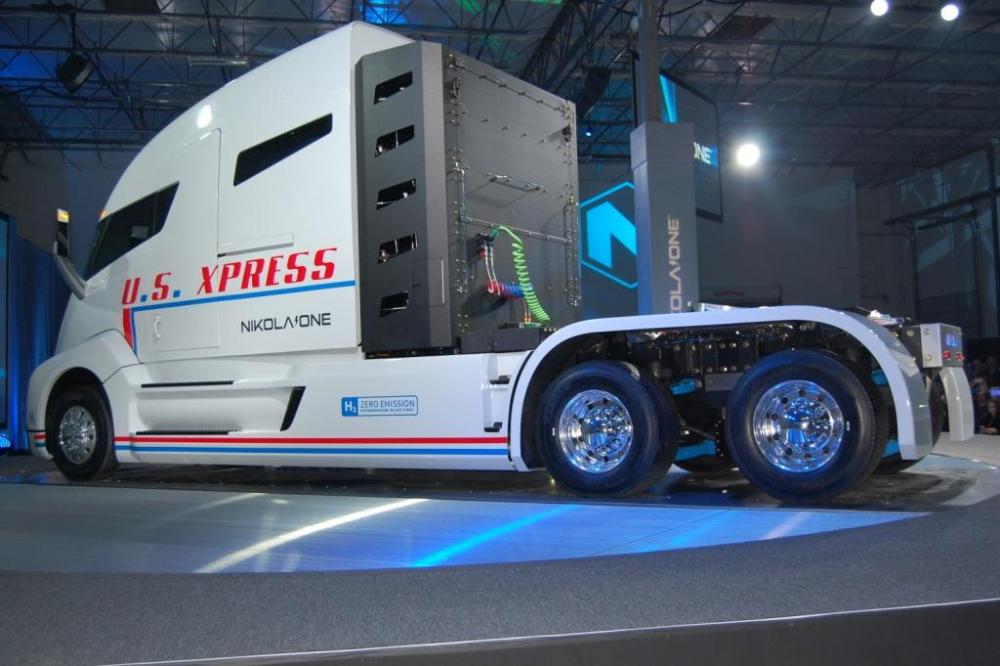
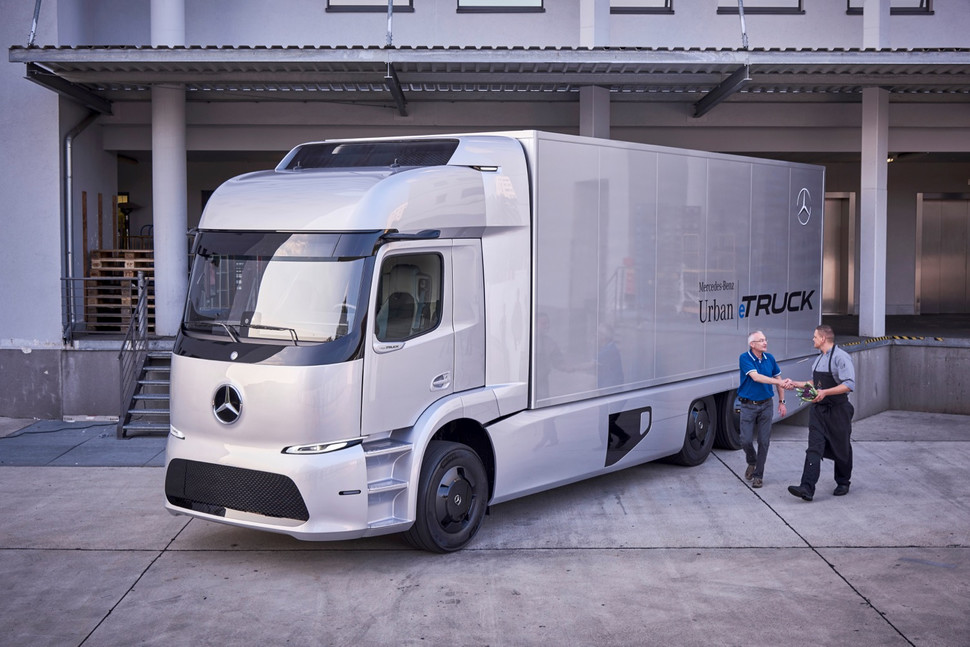
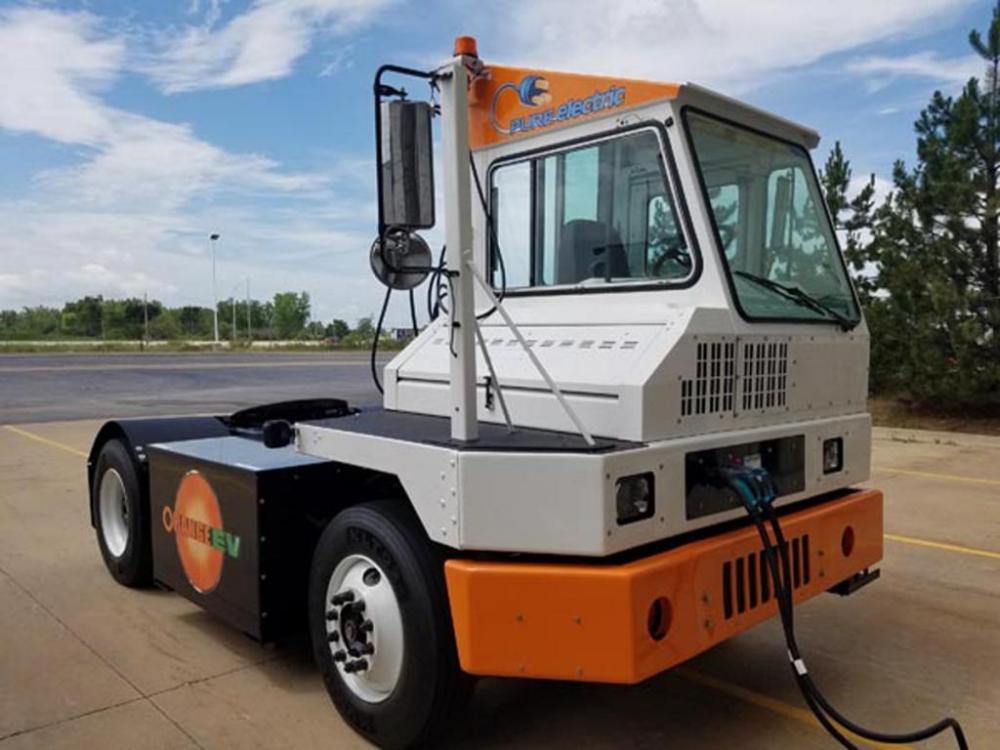
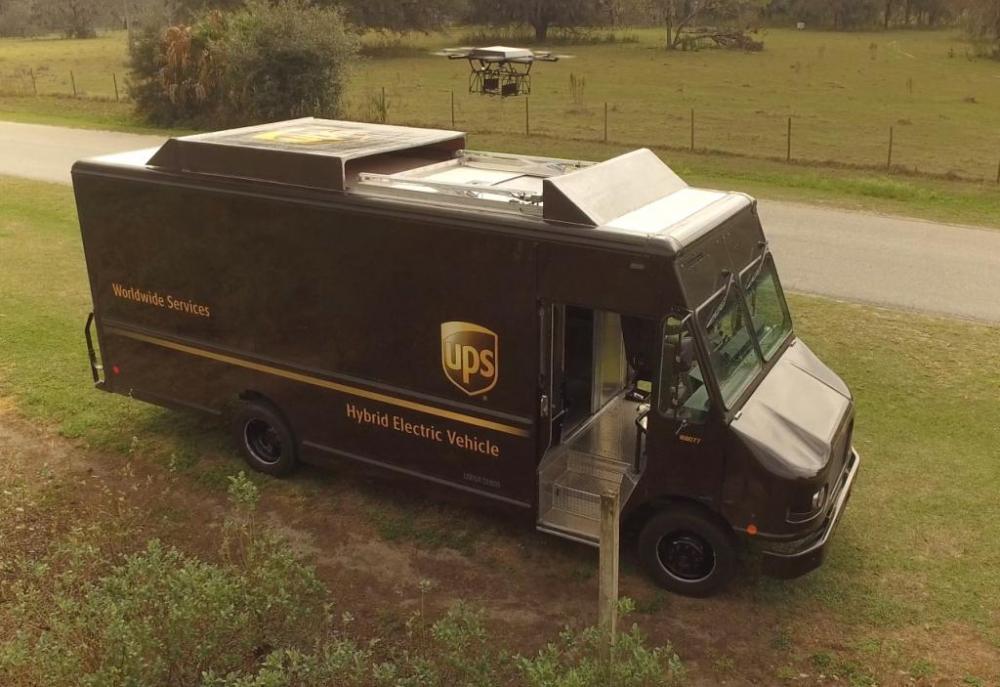
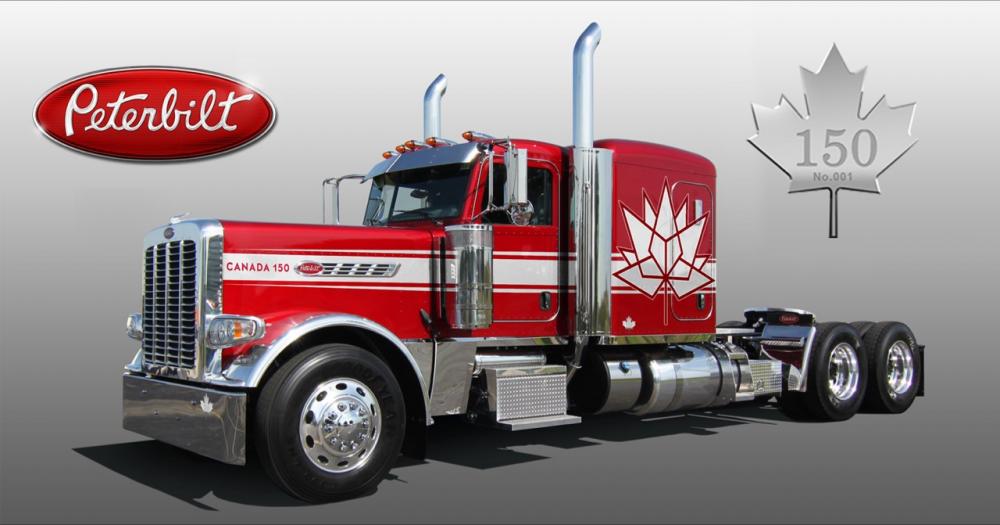

Toyota Explores Heavy Truck Hydrogen Fuel Cell Application
in Trucking News
Posted
Toyota to Road-Test Class 8 Hydrogen Fuel Cell Truck
Heavy Duty Trucking / April 19, 2017
After teasing the concept late last year, Toyota Motor North America has announced plans to operate a Class 8 hydrogen fuel cell truck in real-world use in Southern California this summer, dubbing the effort "Project Portal."
The truck proof of concept will seek to determine the feasibility of fuel cell technology for heavy-duty trucks, specifically in drayage operations. The study is part of the Port of Los Angeles’s Clean Air Action Plan, which is aimed at reducing emissions in and around the Ports of Los Angeles and Long Beach.
“By bringing this heavy-duty, zero-emission hydrogen fuel cell proof-of-concept truck to the Port, Toyota has planted a flag that we hope many others will follow,” said Mary D. Nichols, chair, California Air Resources Board. “CARB will be following the progress of this feasibility study with interest, as we look to develop the best mix of regulations and incentives to rapidly expand the market for the cleanest, most efficient big trucks to meet the need for dramatic change in the freight sector.”
Project Portal is a fully functioning, heavy-duty truck with the power and torque capacity to conduct port drayage operations while producing only water vapor as emissions.
The truck will generate more than 670 horsepower and 1,325 lb.-ft. of torque from two Mirai fuel cell stacks and a 12-kilowatt-hour battery. The concept vehicle will have a gross combined weight capacity of 80,000 pounds and an estimated range of more than 200 miles per fill in normal drayage operation.
“Hydrogen fuel cell vehicles play a role in California’s efforts to achieve greenhouse gas emission reduction goals, improve air quality, and reduce our reliance on fossil fuels,” said Janea A.Scott, commissioner, California Energy Commission. “The Commission applauds Toyota for putting this cutting edge technology to use in a heavy-duty freight proof of concept. This demo will show how fuel cells can help support the heavy-duty sector’s efforts to increase efficiency, transition to zero-emission technologies, and increase competitiveness.”
.